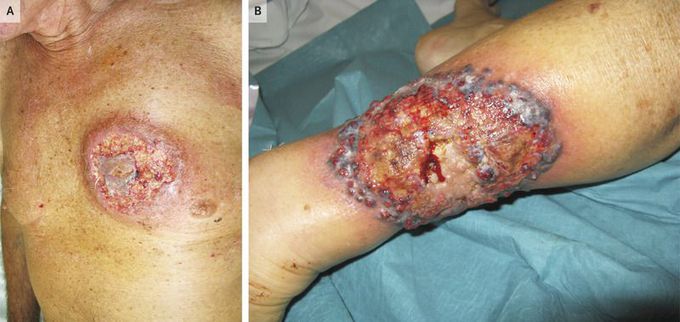


Pyoderma Gangrenosum in Ulcerative Colitis
A 71-year-old man with a 5-year history of glucocorticoid-dependent ulcerative colitis presented to the gastroenterology clinic with painful, rapidly progressive ulcerative lesions involving the left chest (Panel A) and leg (Panel B). The physical examination revealed skin ulcerations with a purulent base and an irregular purple edge. The histopathological examination of an incisional biopsy sample obtained from the chest lesion showed epidermal and superficial dermal necrosis with an underlying mixed inflammatory-cell infiltrate, abscess formation, and leukocytoclastic vasculitis. Direct microbiologic examination and cultures were negative for bacterial, fungal, and atypical mycobacterial pathogens. A diagnosis of pyoderma gangrenosum was made. Pyoderma gangrenosum is an ulcerating, inflammatory skin disorder that can be associated with an underlying systemic disease, such as ulcerative colitis. The condition is the second most common dermatologic manifestation of inflammatory bowel disease after erythema nodosum. The patient was treated with infliximab at weeks 0, 2, and 6 and then every 8 weeks. After 3 months, there was complete resolution of the skin lesions and remission of the ulcerative colitis.

